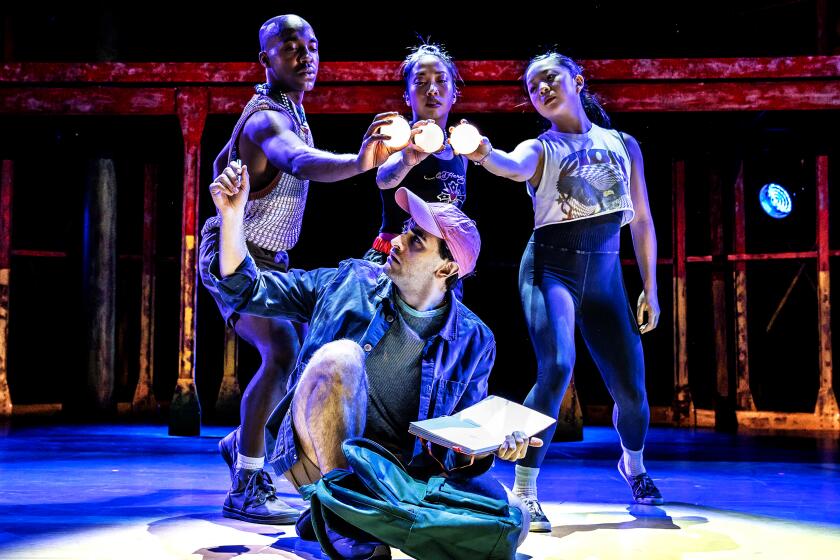Watching TV With Friedlander; Studying Biggs’ Miniatures
At Paul Kopeikin Gallery, Lee Friedlander’s black-and-white photographs of televisions from the early 1960s preserve some of the weirdness that must have accompanied this now ubiquitous medium when it had just begun to redefine how Americans look at themselves. No larger than the page of a book, each of Friedlander’s pictures is a simple yet strangely alienating affair.
All 17 prints include the animated screen of a TV set, broadcasting a program or movie among such mundane household items as a lamp, wastebasket, dresser or radiator. Friedlander has set up each photograph as if composing a still life. With great economy of means, seemingly incidental details play off of one another: Antennae, open windows, angled mirrors and rumpled bed sheets jostle for your attention with tightly cropped close-ups of people on TV.
Most of the photographer’s slice-of-life scenarios are imbued with a deft touch of anxiety. He often accentuates their disquieting aura by standing close to the TV and aiming his camera sharply downward. Consequently, looking at these images feels something like having the rug pulled out from under your feet.
As if to give off-balanced viewers a clue about how Friedlander’s TV pictures should be seen, this smart little show also includes seven of the photographer’s oddly fragmented self-portraits from the late 1960s and one from the 1980s. Seen in this context, it’s clear that his images of in situ TVs are portraits.
As potent and emotionally loaded as traditional portrayals of people, Friedlander’s are even more unsettling because it’s never clear whether they’re portraits of TV sets, the rooms they inhabit or the individuals standing before both.
* Paul Kopeikin Gallery, 138 N. La Brea Ave., (213) 937-0765, through Oct. 20. Closed Sundays and Mondays.
Bottled Up: If a yuppie novelty store like the Sharper Image had a faux antiques department, John A. Biggs’ kinetic sculptures would fit right into its inventory of handsomely crafted baubles. At once well-made and useless, the sculptor’s designer confections at George’s Gallery are so silly that they don’t even evoke the gee-whiz wonder of a ship-in-a-bottle.
Biggs’ most ambitious pieces consist of Lilliputian devices that have been meticulously screwed and bolted together inside Pyrex beakers with very small openings. Each sculpture-in-a-bottle comes with at least one precisely ruled drawing and a protective carrying case made of ebony, mahogany, leather, brass and padded fabric.
Protruding knobs allow viewers to spin a miniature flywheel, operate a diamond glass cutter, make the jaw of a cat’s skull move up and down, and cause phallic forms to penetrate the seats of dollhouse-size chairs.
Clinical and creepy, Biggs’ painstaking works inspire little wonder and less awe. Rather than getting you to marvel at their intricacies and ask, “How did he do it?,” they mostly make you wonder why he bothered at all.
* George’s Gallery, 1766 N. Vermont Ave., (213) 666-9447, through Oct. 28. Closed Sundays.
More to Read
The biggest entertainment stories
Get our big stories about Hollywood, film, television, music, arts, culture and more right in your inbox as soon as they publish.
You may occasionally receive promotional content from the Los Angeles Times.





